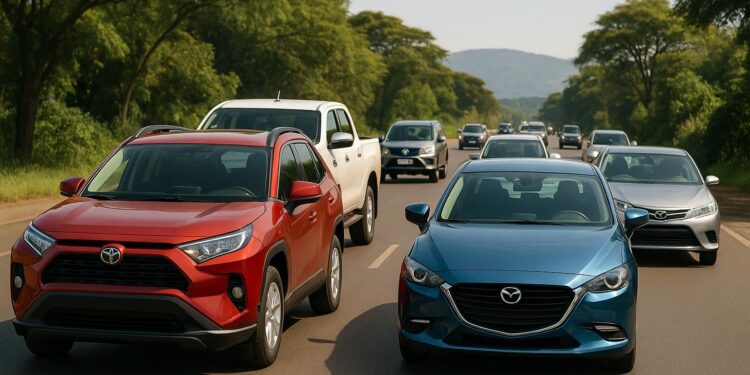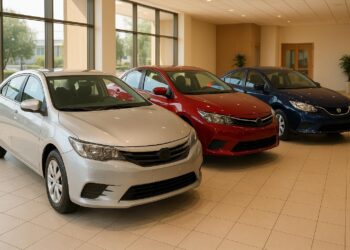Looking for the most reliable, fuel-efficient, and affordable cars in Kenya? Here’s a quick rundown of the top 10 vehicles that dominated Kenyan roads in 2024, tailored to handle the country’s diverse terrains and economic challenges:
- Isuzu D-Max: A tough pickup built for both city streets and rugged countryside. Prices range from KSh 3.8M–9.4M. Fuel economy: 16 km/l (1.9L engine).
- Toyota Land Cruiser 70: Known for durability and off-road capability. Prices range from KSh 17.9M–25M, with fuel economy around 9.6L/100km.
- Toyota Hiace: A favorite for public transport and group travel. Prices range from KSh 3.8M–9.5M. Fuel economy: 10–12 km/l.
- Toyota Hilux: A reliable pickup for tough terrains. Prices range from KSh 3.2M–8.5M. Fuel economy: 13–15 km/l.
- Isuzu N-Series: A dependable light-duty truck for businesses. Starting price: KSh 3.8M.
- Toyota Fielder: A practical wagon for families and commuters. Prices range from KSh 1.5M–2.7M. Fuel economy: 25 km/l (hybrid models).
- Mazda Demio: A budget-friendly hatchback with excellent fuel efficiency. Prices range from KSh 750K–1.8M. Fuel economy: 25 km/l.
- Mahindra Scorpio: A rugged SUV for urban and off-road use. Prices start at KSh 2.1M. Fuel economy: 13.8 km/l.
- Subaru Forester: A versatile SUV with all-wheel drive. Prices vary, with fuel economy at 7.2–9.0L/100km.
- Mahindra Bolero: A durable utility vehicle for businesses and families. Prices start at KSh 1.6M. Fuel economy: 14–16 km/l.
Quick Comparison Table
| Vehicle | Price Range (KSh) | Fuel Economy | Key Feature |
|---|---|---|---|
| Isuzu D-Max | 3.8M–9.4M | 16 km/l | Tough pickup for all terrains |
| Toyota Land Cruiser 70 | 17.9M–25M | 9.6L/100km | Rugged off-road capability |
| Toyota Hiace | 3.8M–9.5M | 10–12 km/l | Ideal for public transport |
| Toyota Hilux | 3.2M–8.5M | 13–15 km/l | Reliable pickup for tough roads |
| Isuzu N-Series | Starting at 3.8M | N/A | Dependable light-duty truck |
| Toyota Fielder | 1.5M–2.7M | 25 km/l (hybrid) | Practical wagon for families |
| Mazda Demio | 750K–1.8M | 25 km/l | Budget-friendly hatchback |
| Mahindra Scorpio | Starting at 2.1M | 13.8 km/l | Rugged SUV for varied terrains |
| Subaru Forester | Varies | 7.2–9.0L/100km | All-wheel drive versatility |
| Mahindra Bolero | Starting at 1.6M | 14–16 km/l | Durable utility vehicle |
These cars are loved for their reliability, fuel efficiency, and ability to handle Kenya’s mix of smooth highways and rugged rural roads. Whether you’re looking for a family car, a commercial vehicle, or something for off-road adventures, this list has you covered.
15 Best Cheapest Cars In Kenya and Their Prices In 2024!
Car Buying Trends in Kenya
Kenya’s car buying trends in 2024 paint a picture of an economy in flux, with shifting consumer habits reflecting the pressures of reduced incomes and evolving priorities. Formal job creation dropped significantly, from 122,900 positions in 2023 to just 75,000 in 2024, while car sales fell by 1,361 units in the first ten months of 2023.
With less money to spend, many consumers delayed purchasing vehicles or turned to more affordable used cars. According to the Institute of Public Finance Kenya (IPFK), the average monthly disposable income for formally employed middle-income earners dropped from KSh 41,000 to KSh 36,800 in 2024. This financial squeeze left buyers prioritizing cost-effective options, pushing the demand for second-hand cars over new models.
Tax policies further complicated the market. Import taxes on popular car models rose sharply – up to 145% in some cases – and the Kenya Revenue Authority is set to introduce a new Current Retail Selling Price (CRSP) system starting July 1, 2025. For example, a 1.2-liter Suzuki Swift manufactured in January 2018 now incurs total taxes of KSh 623,503, a significant jump from the previous KSh 253,574.
"Small engine vehicles are the ones that have been hit hardest", explained Charles Munyori, Secretary-General of the Kenya Auto-Bazaar Association (KABA).
Consumers are also prioritizing practicality over luxury. A 2024 survey revealed that 56% of Gen Z respondents view owning a car as a key life milestone. Among younger buyers, 38% cited safety and secure travel as their primary reasons for purchasing a vehicle, while over half described their car as a personal sanctuary. Additionally, urban buyers in cities like Nairobi and Mombasa are showing a growing interest in low-emission vehicles, influenced by concerns over air quality.
Financing costs have played a major role in shaping the market. While the Central Bank of Kenya cut interest rates in response to easing inflation, rising food prices and mandatory contributions to social programs like the Social Health Insurance Fund (SHIF) and Affordable Housing Levy continued to strain household budgets. A 2024 Kenya Bankers Association report found that over 60% of households surveyed had to reduce meal portions or skip meals altogether due to rising costs.
The scarcity of vehicles and the depreciation of the Kenyan shilling have driven up used car prices. High import taxes on new cars have made second-hand vehicles the more attractive option, particularly for middle-income earners. Cars priced between KSh 500,000 and KSh 1.2 million have become the go-to choice for buyers seeking reliable transportation without overspending.
Kenya’s mixed road conditions, ranging from smooth highways to rugged rural paths, also influence consumer preferences. Many buyers prioritize vehicles with strong construction and all-terrain tires, contributing to a $376 million tire market.
Interestingly, despite the economic challenges, new motor vehicle registrations increased by 20% compared to 2023. Hybrids and electric vehicles are gaining popularity, bolstered by lower tax rates and government incentives. These vehicles offer an appealing combination of affordability and durability, making them an attractive choice for many buyers.
These trends highlight the factors shaping Kenya’s car market and set the stage for understanding why certain vehicles resonate so strongly with Kenyan drivers.
1. Isuzu D-Max
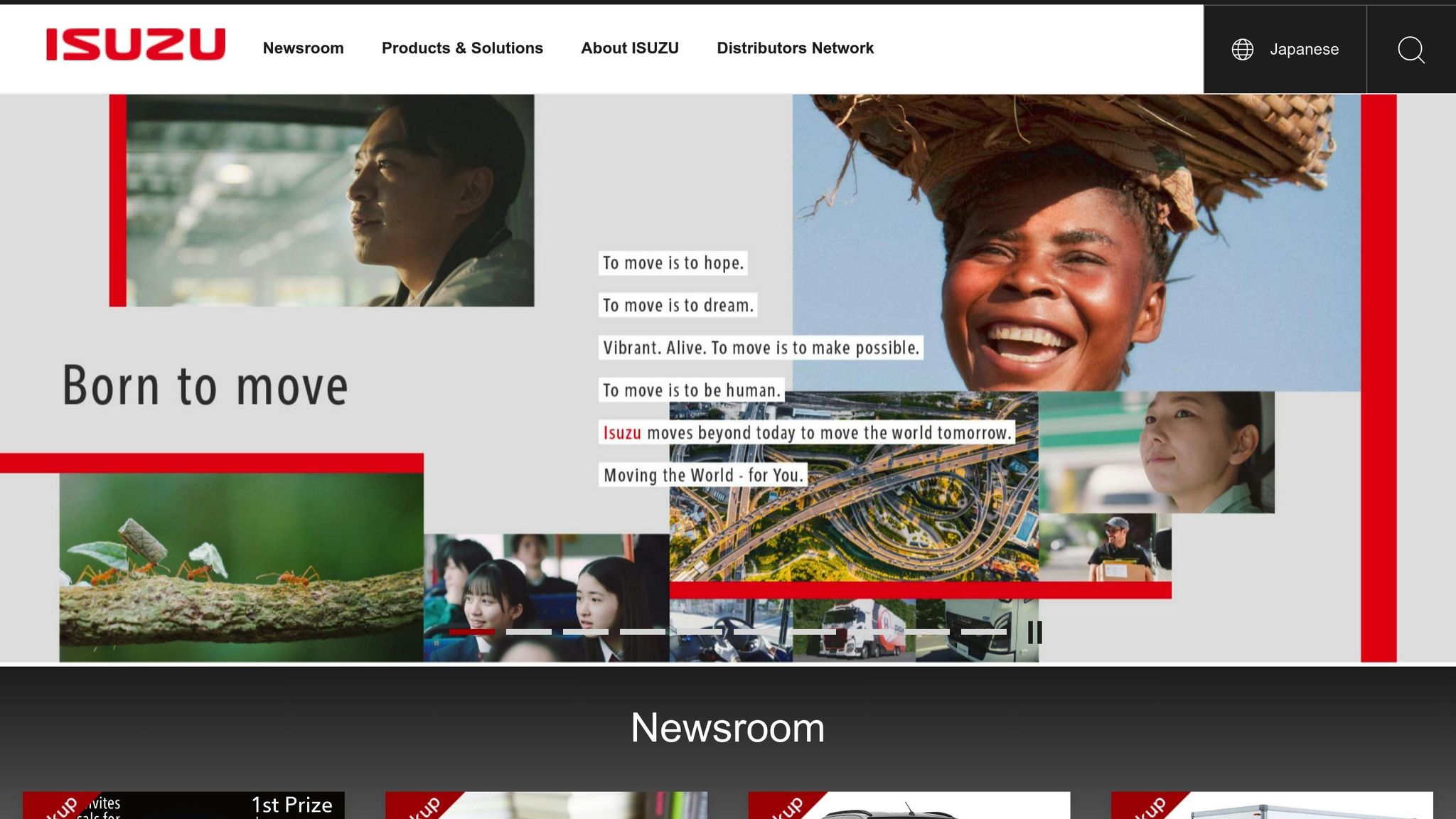
The Isuzu D-Max has earned its place as one of Kenya’s favorite vehicles. Known for its toughness and reliable performance, this midsize pickup is equally at home on city streets as it is tackling demanding work in the countryside.
Pricing (KSh and USD)
The D-Max offers a range of pricing options to suit different budgets. New models cost between KSh 3,849,000 and KSh 9,380,000 (around $29,607–$72,154). For those looking at used options, prices range from KSh 2,995,000 to KSh 3,450,000 (approximately $23,038–$26,538). Older models, like the 2012 version, are available starting at KSh 1,450,000 (about $11,154). Local assembly of certain models helps keep prices competitive, and many dealerships offer financing plans to make ownership more accessible. Its impressive fuel efficiency further adds to its value.
Fuel Economy (mpg and L/100 km)
For a pickup truck, the D-Max delivers strong fuel efficiency. The 1.9L diesel engine achieves 16.0 km/l (around 37.6 mpg or 6.25 L/100 km), while the larger 3.0L diesel engine offers 13.0 km/l (approximately 30.6 mpg or 7.7 L/100 km). Third-generation models show slightly varied consumption, with the 1.9L engine using 6.5–7.5 L/100 km and the 3.0L engine consuming 7.5–8.5 L/100 km. With a 76-liter fuel tank, the D-Max can cover long distances between refuels, making it practical for both daily use and extended trips.
Built for Kenya’s Roads
The D-Max is designed to handle Kenya’s diverse road conditions with ease. Its sturdy ladder-frame chassis is built to resist corrosion, making it suitable for smooth highways and rough rural terrain alike. With a ground clearance of 220–235 mm, it navigates obstacles effortlessly. The powerful 3.0L turbo diesel engine generates 450 Nm of torque, perfect for climbing steep hills or hauling heavy loads. Both engine options are built to last, often exceeding 300,000 km with minimal issues, which makes the D-Max a dependable choice for commercial and remote area operations.
Maintenance and Spare Parts
The D-Max’s simple engineering keeps maintenance costs manageable. Spare parts are widely available across Kenya and are known for their durability, reducing the need for frequent replacements. Its service-friendly design allows many repairs to be handled by local garages, making upkeep convenient and affordable. These qualities make the D-Max a standout option in Kenya’s vehicle market.
2. Toyota Land Cruiser 70
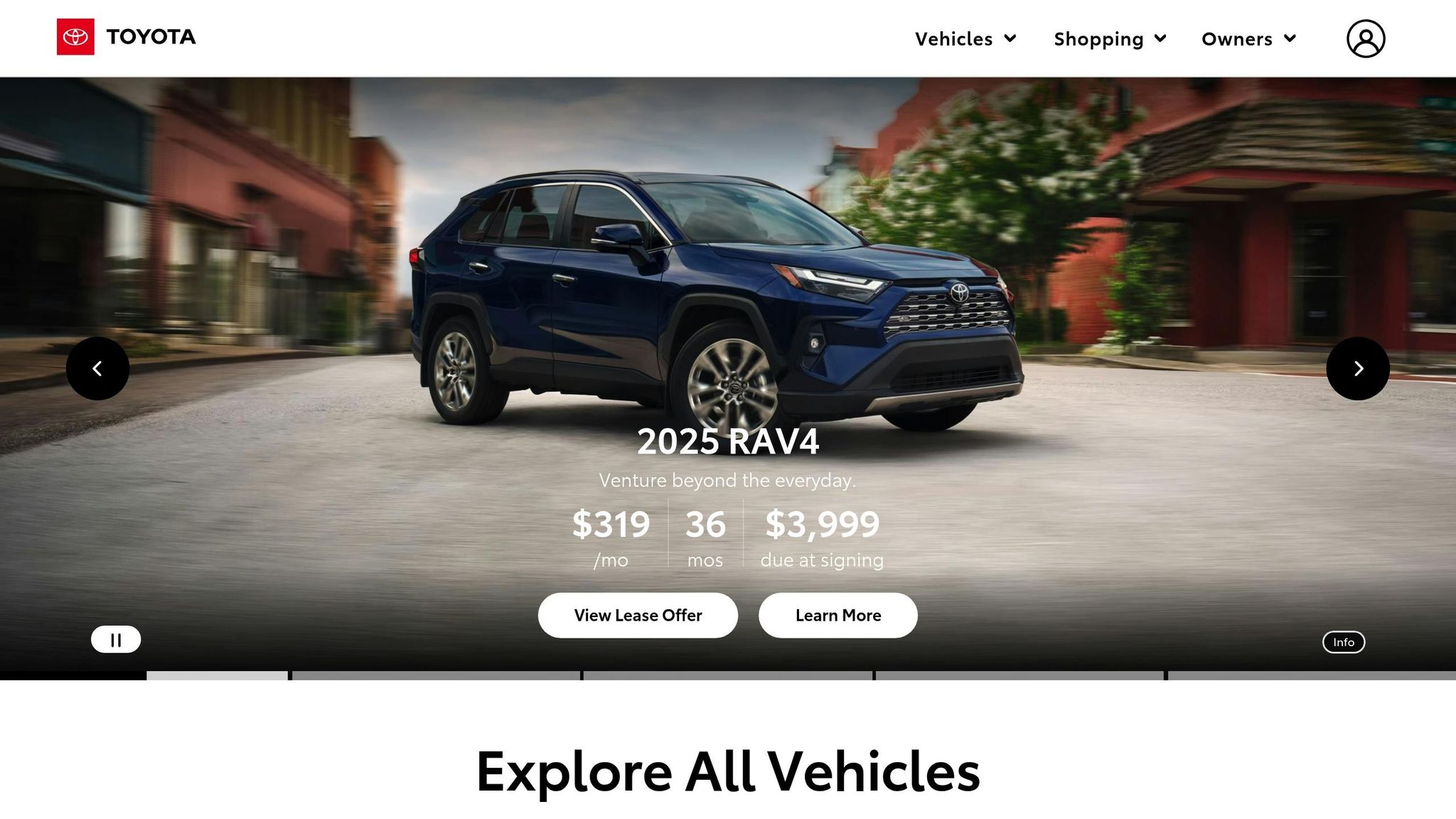
The Toyota Land Cruiser 70 is celebrated for its rugged off-road capabilities and long-lasting durability. It’s a top choice for safari operators, farmers, and adventurers alike. Whether navigating the expansive Maasai Mara or tackling the rocky trails of northern Kenya, this vehicle has earned its reputation as a reliable workhorse. Below, we break down the key features that make it a standout in Kenya’s toughest driving conditions.
Affordability (Price in KSh and USD)
The 2024 Toyota Land Cruiser 70 comes with a hefty price tag, reflecting its premium build and reliability. New models range from KSh 17,900,000 to KSh 25,000,000 (around $137,692 to $192,308). For those considering pre-owned options, imported 2024 models from Japan are priced between $55,248 and $84,418, roughly KSh 7,180,240 to KSh 10,974,340. While the initial cost is high, the vehicle’s strong resale value and dependable performance make it a worthwhile investment.
Fuel Efficiency (mpg and L/100 km)
Despite its tough build and off-road focus, the Land Cruiser 70 offers decent fuel economy for its class. The 2.8L diesel engine consumes 9.6L/100km (about 24.5 mpg), while the larger 4.5L diesel variant averages 10.7L/100km (approximately 22.0 mpg). On flat roads, it delivers 8–10 km/l (18.8–23.5 mpg), while hilly terrain sees a drop to 6–8 km/l (14.1–18.8 mpg).
Here’s a quick look at the fuel consumption across variants:
| Variant | Engine | Body Type | Fuel Consumption | Transmission |
|---|---|---|---|---|
| SUV | 4.5L Diesel | SUV | 10.7L/100km (22.0 mpg) | 5-Speed Manual |
| Single/Dual Cab | 2.8L Diesel | Single & Dual Cab | 9.6L/100km (24.5 mpg) | 6-Speed Auto |
With a fuel tank capacity of 130–150 liters, this vehicle can cover 1,100–1,500 kilometers on a single tank. This makes it ideal for extended safaris or operations in remote regions where fuel stations are scarce.
Durability and Road Suitability
The Land Cruiser 70 is synonymous with reliability, especially in harsh conditions. Safari operators often favor the diesel models for their high torque and better fuel efficiency, which are critical for navigating uneven terrain. Whether it’s tarmac, river crossings, rocky trails, or sand dunes, this vehicle handles it all with ease. Its robust design ensures it remains functional for decades, a crucial feature in areas with limited access to roadside assistance.
Maintenance Costs and Spare Parts Availability
Toyota’s widespread dealer network and straightforward engineering make maintenance manageable. Spare parts are easy to find, and repairs are typically quick and efficient. To keep the Land Cruiser 70 running at its best, regular practices like maintaining steady speeds (60–80 km/h), using 4WD wisely, ensuring proper tire pressure, and cleaning air filters can go a long way in extending its lifespan.
3. Toyota Hiace
The Toyota Hiace stands out as a cornerstone of Kenya’s public transport system, offering a dependable and versatile option for both urban and rural travel. With its spacious interior and practical design, it has become a favorite in the matatu industry and for group transport needs.
Affordability (Price in KSh and USD)
The 2025 Hiace models are available at prices ranging from KSh 3.8M to KSh 9.5M ($29,231–$73,077) for new vehicles, while used models cost between KSh 2.2M and KSh 6.55M ($16,923–$50,385).
| Variant | New Price (KSh) | New Price (USD) | Used Price (KSh) | Used Price (USD) |
|---|---|---|---|---|
| 7L | 3.8M – 4.9M | $29,231 – $37,692 | 2.2M – 3.5M | $16,923 – $26,923 |
| 9L | 5.5M – 7.1M | $42,308 – $54,615 | 2.8M – 4.0M | $21,538 – $30,769 |
| 14-Seater | 6.5M – 7.8M | $50,000 – $60,000 | 3.5M – 5.2M | $26,923 – $40,000 |
| 18-Seater | 8.2M – 9.5M | $63,077 – $73,077 | 4.0M – 6.5M | $30,769 – $50,000 |
Fuel Efficiency (mpg and L/100 km)
When it comes to fuel economy, the Hiace delivers solid performance. Diesel variants achieve 10–12 km/l (23.5–28.2 mpg) on highways and 8–10 km/l (18.8–23.5 mpg) in city driving. The 2.8-liter turbo diesel engine consumes 7.4–8.2 liters per 100 km (36–38 mpg) under normal conditions.
In mixed driving scenarios, the 2023 Hiace averages 9.8 L/100 km (24.0 mpg), slightly higher than Toyota’s official rating of 8.2 L/100 km (28.7 mpg). Diesel models are particularly cost-effective, offering 20–30% better fuel efficiency than gasoline versions, which helps lower operating costs.
Durability and Road Suitability
The Hiace is built to handle Kenya’s varied and often challenging road conditions. Its durability and reliability make it the top choice for matatu operators, who often prefer it over competitors like the Nissan Caravan due to its consistent engine performance.
Maintenance Costs and Spare Parts Availability
Maintaining a Hiace is relatively straightforward and cost-effective. Toyota’s widespread dealer network ensures easy access to spare parts, while the simple engine design allows for quick repairs and diagnostics. This reduces downtime, an essential factor for commercial operators.
With its sturdy construction, fuel efficiency, and ease of maintenance, the Toyota Hiace continues to be a trusted workhorse on Kenya’s roads, catering to both urban and rural transport needs.
4. Toyota Hilux
The Toyota Hilux has built a strong reputation in Kenya as a dependable and versatile pickup truck. Known for its rugged performance, it’s a favorite among both commercial users and private owners who need a vehicle that can handle Kenya’s varied terrain while offering reliable day-to-day service.
Pricing (KSh and USD)
The Hilux comes in several configurations, making it accessible to a range of budgets and needs. While new models vary depending on cabin type and drivetrain, the used market offers more affordable options.
| Model | New Price (KSh) | New Price (USD) | Used Price (KSh) | Used Price (USD) |
|---|---|---|---|---|
| Hilux Single Cab | 3,200,000 – 3,800,000 | $24,615 – $29,231 | 1,800,000 – 2,900,000 | $13,846 – $22,308 |
| Hilux Double Cab | 4,500,000 – 6,200,000 | $34,615 – $47,692 | 3,000,000 – 4,300,000 | $23,077 – $33,077 |
| Hilux 4×4 Double Cab | 6,800,000 – 8,500,000 | $52,308 – $65,385 | 4,500,000 – 6,500,000 | $34,615 – $50,000 |
With a range of pricing options, the Hilux appeals to a wide audience. Its solid performance and build quality further add to its value, making it a reliable choice for Kenya’s diverse road conditions.
Built for Tough Roads
The Hilux is designed to handle Kenya’s challenging roads with ease. Its sturdy chassis and suspension make it dependable whether navigating Nairobi’s busy streets or tackling rugged rural paths. The 4×4 models are particularly well-suited for off-road adventures, offering high ground clearance and reinforced underbody protection. These features make it a practical investment, especially given its strong resale value.
Maintenance and Spare Parts
Toyota’s extensive service network makes owning a Hilux convenient, with easy access to quality spare parts and skilled maintenance. For instance, CFAO Mobility Kenya stocks 13,000 line items and operates Africa’s first RFID-managed parts warehouse, ensuring quicker access to genuine parts sourced from Japan. Additionally, these parts come with a one-year warranty.
Routine maintenance costs are reasonable, with prices for common parts and services as follows:
- Engine oil filters: KSh 1,500–3,500 ($12–$27)
- Brake pads: KSh 3,000–7,000 ($23–$54)
- Timing belts: KSh 8,000–15,000 ($62–$115)
- Clutch kits: KSh 15,000–30,000 ($115–$231)
- Radiators: KSh 10,000–20,000 ($77–$154)
Service costs, such as engine diagnostics (KSh 5,000–25,000, $38–$192) and transmission repairs (KSh 8,000–30,000, $62–$231), are also manageable. Regular servicing at authorized centers ensures the Hilux remains reliable and protects warranty coverage, making it a practical choice for both personal and commercial use.
5. Isuzu N-Series
The Isuzu N-Series has earned its place as a dependable light-duty truck, catering to both urban and rural areas in Kenya. Its combination of performance and reasonable pricing makes it a practical choice for businesses.
Affordability (Price in KSh and USD)
The N-Series is priced to make commercial truck ownership attainable for businesses of all sizes. Here’s a breakdown of prices for new models:
| Model | Price (KSh) | Price (USD) |
|---|---|---|
| NLR77E | 3,823,000 | $29,751 |
| NMR85H | 4,130,000 | $32,140 |
| NQR XTRA | 5,150,000 | $40,078 |
| NMR85 (Bus) | 6,005,000 | $46,739 |
| NQR81 (Bus) | 7,071,000 | $55,027 |
With starting prices as low as KSh 3,823,000 ($29,751), the N-Series offers great value for businesses in need of reliable transport. Its lineup caters to a wide range of needs, from small-scale deliveries to large logistics operations.
Fuel Efficiency (mpg and L/100 km)
Equipped with the Blue Power engine, the N-Series delivers impressive fuel efficiency, helping to reduce operating costs. Isuzu’s reputation for building fuel-efficient vehicles makes this truck particularly appealing to fleet operators looking to save on fuel expenses.
Durability and Road Suitability
Designed to handle Kenya’s varied road conditions, the N-Series is built for the long haul. Its 4HK1-TC diesel engine comes with a B10 durability rating of 375,000 miles, meaning 90% of these engines are expected to reach this milestone without major repairs.
"Isuzu diesel engines are known for long-term dependability, with the B-10 rating underscoring their enhanced durability."
– Shaun Skinner, President, Isuzu Commercial Truck of America, Inc
The N-Series also meets Euro 4 and Euro 5 emission standards, ensuring it balances strong performance with environmental responsibility.
Maintenance Costs and Spare Parts Availability
The N-Series is not only robust but also versatile, with options for various body configurations. Popular setups include dropside trucks, refrigerated units, tippers, tankers, and more, making it suitable for industries like construction, agriculture, logistics, and waste management.
Maintenance is straightforward and affordable, thanks to Isuzu’s extensive network of service centers across Kenya. This widespread support ensures that spare parts and service are readily available, keeping downtime to a minimum.
6. Toyota Fielder
The Toyota Fielder is a wagon that blends space, efficiency, and affordability, making it a practical choice for Kenyan roads. Its adaptability has earned it popularity among city commuters and families who need extra cargo space without the expense of an SUV.
Affordability (Price in KSh and USD)
The Fielder offers a range of pricing options, depending on the trim and model year, providing great value for buyers in Kenya:
| Model Variant | Price Range (KSh) | Price Range (USD) |
|---|---|---|
| 1500cc X Trim | 1,500,000 – 1,800,000 | $11,673 – $14,008 |
| 1800cc Hybrid | 2,100,000 – 2,700,000 | $16,342 – $21,011 |
| 1500cc WXB (2018/19) | 1,900,000 – 2,300,000 | $14,789 – $17,901 |
For those considering used options, models from 2015–2017 can start as low as KSh 900,000. A 2018 model typically costs around KSh 1,750,000, while a 2010 version is priced at approximately KSh 1,050,000. Hybrid models, though more expensive, offer excellent fuel savings, and maintenance costs are notably lower – parts are estimated to be about 30% cheaper compared to SUVs.
Fuel Efficiency (mpg and L/100 km)
Fuel economy is a standout feature of the Fielder. The 1.8L versions deliver around 15 km/L, while the 1.5L models can achieve up to 25 km/L. Hybrid models are officially rated at 33 km/L, though real-world performance typically averages closer to 25 km/L. These figures make the Fielder an economical option for both city and long-distance driving.
Durability and Road Suitability
Toyota’s reputation for reliability shines in the Fielder, which handles Kenya’s varied road conditions – from urban streets to rough rural terrains – with ease.
"The Fielder’s proven reliability makes it a dependable choice for varied Kenyan terrains. While it may not be the fastest vehicle, what it lacks in speed, it makes up for in dependability." – DaYu Auto Suspension shocks/coil springs
With a ground clearance of 6.3 inches, the Fielder is well-equipped for Kenya’s roads. Its engine, when properly maintained, is known for its longevity, contributing to its strong resale value. Maintenance is straightforward and cost-effective, further adding to its appeal.
Maintenance Costs and Spare Parts Availability
Thanks to Toyota’s widespread presence in Kenya and the Fielder’s straightforward design, maintenance remains affordable. The 1.5L variants are particularly economical for city use, while the 1.8L models are ideal for longer trips. Spare parts – both genuine Toyota options and reliable aftermarket alternatives – are readily available through local suppliers, ensuring repairs are convenient and budget-friendly.
sbb-itb-e5ed0ed
7. Mazda Demio
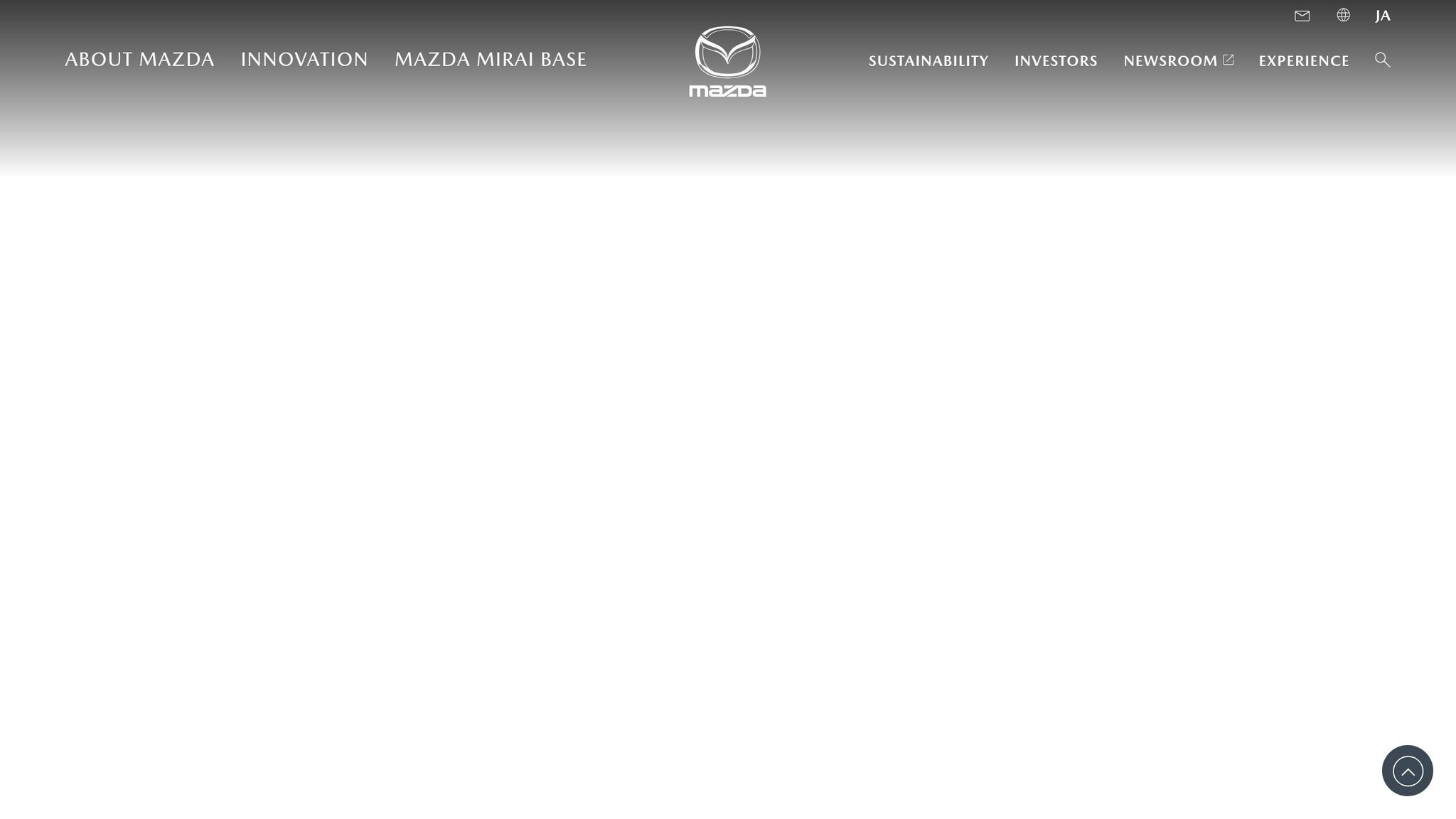
The Mazda Demio stands out as one of Kenya’s most budget-friendly subcompact cars, offering a blend of fuel efficiency and practical design that makes it a favorite on Kenyan roads. It’s a top choice for taxi operators, city commuters, and families seeking reliable transportation at an affordable price. Let’s break down why this hatchback is so popular, focusing on its pricing, fuel economy, and performance.
Pricing (in KSh and USD)
The Demio provides an affordable entry point for car buyers in Kenya, with options to suit a variety of budgets. It comes with two engine choices – a 1,300cc petrol engine and a 1,500cc diesel engine – catering to different driving preferences and needs.
| Model Year | 1300cc Price (KSh) | 1300cc Price (USD) | 1500cc Price (KSh) | 1500cc Price (USD) |
|---|---|---|---|---|
| 2014 | 750,000 – 1,000,000 | $5,841 – $7,788 | 850,000 – 1,300,000 | $6,620 – $10,124 |
| 2015 | 800,000 – 1,200,000 | $6,230 – $9,346 | 900,000 – 1,300,000 | $7,009 – $10,124 |
| 2016 | 950,000 – 1,300,000 | $7,398 – $10,124 | 1,100,000 – 1,450,000 | $8,567 – $11,293 |
| 2017 | 1,200,000 – 1,600,000 | $9,346 – $12,461 | 1,300,000 – 1,700,000 | $10,124 – $13,240 |
| 2018 | 1,500,000 – 1,800,000 | $11,682 – $14,019 | 1,450,000 – 1,900,000 | $11,293 – $14,798 |
For those on a tighter budget, locally used Demios can be purchased for as little as KSh 300,000 ($2,336). Meanwhile, imported pre-owned models from Japan typically cost around KSh 1,100,000 ($8,567). Its strong resale value and the availability of spare parts make it a practical choice for long-term ownership.
Fuel Efficiency (mpg and L/100 km)
Fuel efficiency is where the Demio truly shines. It boasts consumption rates as low as 4.9L/100km (48 mpg), outperforming rivals like the Toyota Vitz (6.2L/100km) and Honda Fit (5.5L/100km). The 1,300cc engine averages around 25.0 km per liter (59 mpg), while the 1,500cc version delivers approximately 18.0 km per liter (42 mpg). Some drivers have reported the SkyActiv-G engine achieving up to 30 km per liter (71 mpg) under ideal conditions. With a 44-liter fuel tank, the Demio offers a longer range compared to competitors with smaller tanks, making it a great option for both city driving and longer trips.
Performance on Kenyan Roads
Though compact, the Demio is built to handle Kenya’s diverse road conditions. Its sturdy body ensures it performs well in urban settings and can even manage light off-road excursions. For instance, in September 2024, Blessed Automotives tested a 1,300cc Demio on a road trip from Nairobi through Murang’a and Mukurweini in Nyeri County, ending in Nanyuki, Laikipia County. The car completed the journey on just KSh 3,000 worth of fuel (about 16 liters), carrying five passengers comfortably while navigating bumps and uneven terrain with ease. This makes it a reliable choice for both daily commutes and longer journeys across Kenya.
Maintenance and Spare Parts
The Demio’s widespread use as a taxi has created a strong support network for maintenance and repairs. Spare parts are easy to find in most towns, and local mechanics are well-versed in servicing the vehicle, keeping repair costs low and ensuring quick turnarounds. These factors make the Demio an economical and dependable choice for car buyers looking for long-term value.
8. Mahindra Scorpio
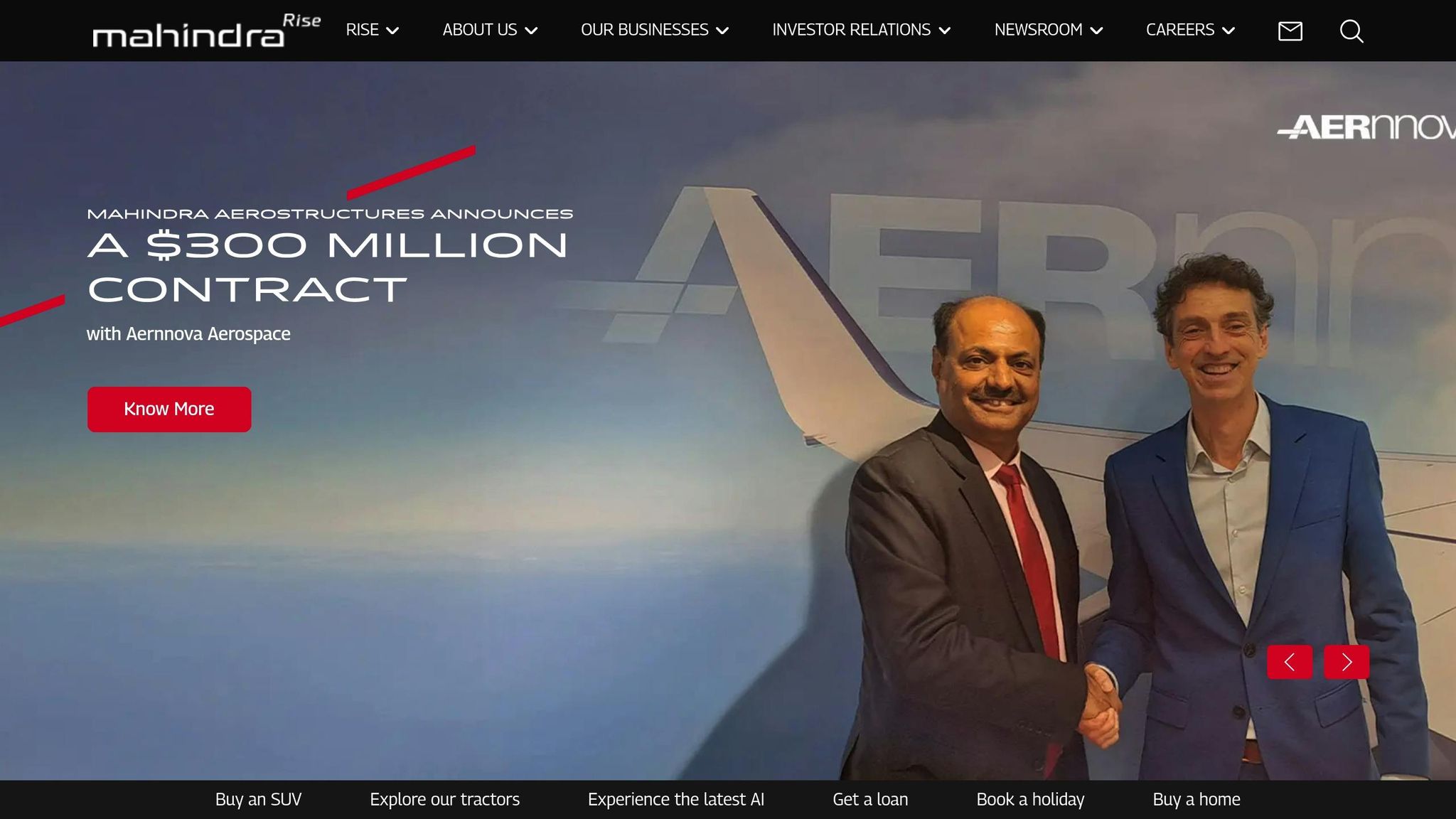
When it comes to transitioning from small hatchbacks to tough SUVs, the Mahindra Scorpio is a standout option for Kenya’s diverse and often demanding road conditions. This Indian-made SUV is built to handle both the daily grind of urban traffic and the challenges of off-road adventures, making it a reliable choice for many Kenyan drivers.
Affordability (Price in KSh and USD)
The Mahindra Scorpio offers competitive pricing in Kenya’s SUV market. A brand-new 2024 Scorpio Pikup is priced at approximately KSh 2,125,300 (around $16,400 USD). For those looking at pre-owned options, prices range from KSh 599,000 to KSh 1,150,000 (roughly $4,660–$8,950 USD) depending on factors like the model year, mileage, and overall condition.
Fuel Efficiency
Fuel efficiency is a key concern for Kenyan drivers, and the Scorpio delivers commendable performance in this area. The Scorpio Double Cab has an official fuel economy of 13.8 km/l (equivalent to 32.5 mpg or 7.2 L/100km). On highways, it can achieve up to 17 km/l, while city driving typically yields about 12 km/l. The Scorpio-N variant, meanwhile, boasts an official combined consumption of 6.9 L/100km, though real-world usage often falls between 8.0 and 8.3 L/100km.
"Very impressive fuel efficiency" – Sylvester Ruhiu Kibugi
Mahindra Kenya highlights the Scorpio Double Cab’s efficiency, powered by a 2200cc mHawk engine delivering 140hp and 320Nm of torque. It also comes with a 5-year/150,000km warranty, ensuring peace of mind for buyers.
Durability and Road Suitability
The Scorpio Safari 4×4 is designed to tackle rough terrains with ease, thanks to its 245mm ground clearance and Ironman suspension. Its durability was put to the test and proven during the Elgon 4×4 Challenge on Mt. Elgon. Additionally, the Scorpio Safari 4×4 is frequently used as a tour van in Kenya, further highlighting its reliability and versatility for commercial purposes. These features firmly establish the Mahindra Scorpio as one of the most dependable vehicles on Kenyan roads in 2024.
9. Subaru Forester
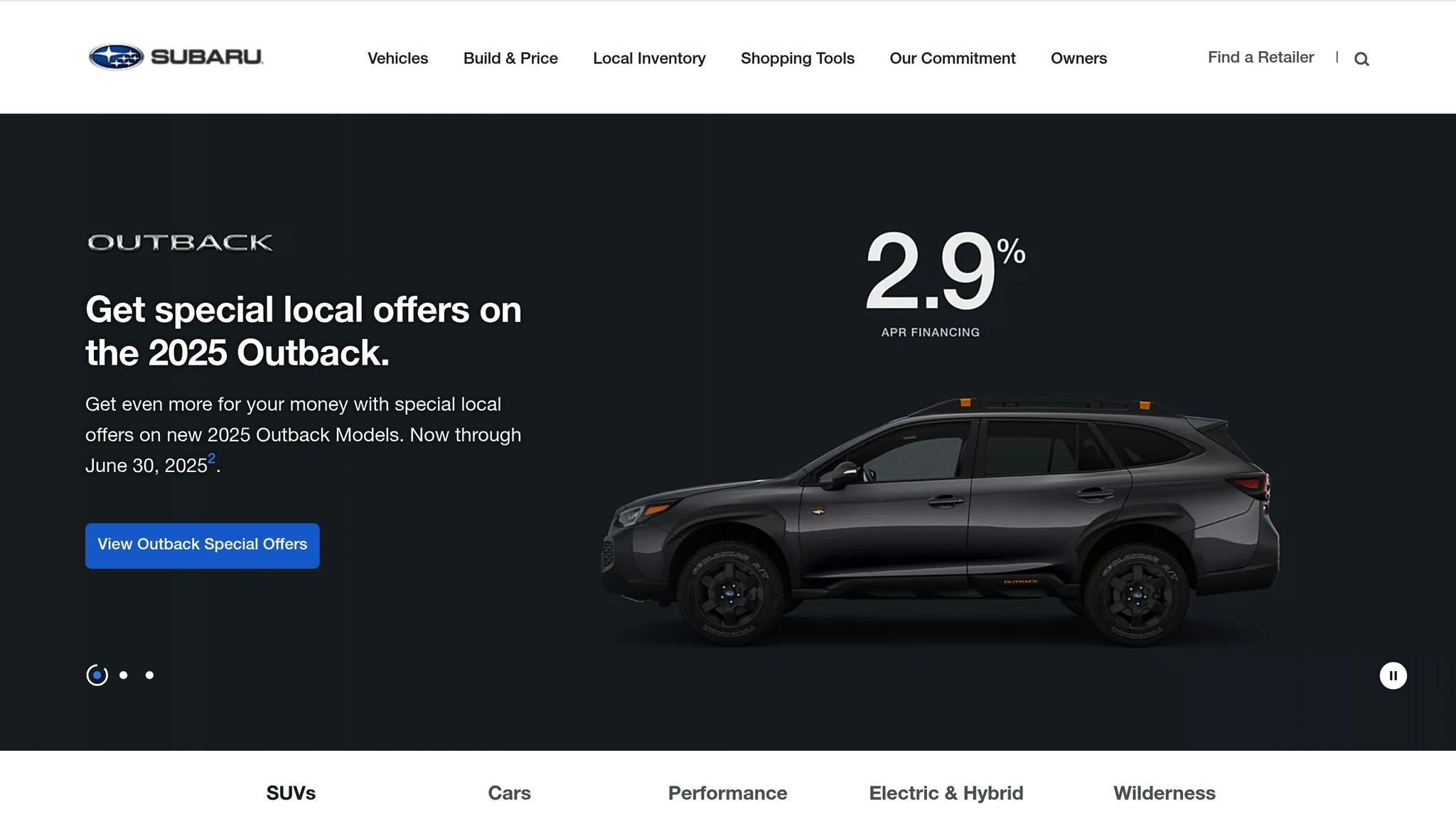
The Subaru Forester is a dependable crossover SUV that combines practicality with fuel efficiency. Designed with Japanese precision, it offers the versatility of an SUV while delivering solid mileage, making it a great choice for navigating Kenya’s cities and countryside.
Affordability (Price in KSh and USD)
The Forester is priced on the higher end of Kenya’s crossover SUV market, but its performance and reliability justify the cost. Used models are readily available, with prices varying based on factors like year, mileage, and condition. Its strong resale value highlights its dependability, making it a solid investment for buyers seeking long-term value.
Fuel Efficiency (mpg and L/100 km)
Fuel economy is one of the Forester’s standout features, a crucial factor given fluctuating fuel prices. Most models achieve between 7.2–9.0 L/100 km (26–33 mpg). For instance, the 2.0i-S EyeSight model offers a combined fuel use of 7.4 L/100 km, with urban consumption at 9.4 L/100 km and highway efficiency at 6.3 L/100 km. This balance of performance and economy makes it equally suited for city driving and off-road escapades.
Durability and Road Suitability
Built to handle Kenya’s diverse roads, the Forester boasts 220 mm (8.7 inches) of ground clearance, ensuring it can tackle potholes and rough terrain with ease. Its Symmetrical All-Wheel Drive (AWD) system delivers power evenly to all four wheels, providing excellent traction on wet or uneven surfaces.
"For a car built to venture off the beaten track, the latest Forester sticks to familiar territory: comfy, spacious and dependable" – Top Gear
The Forester’s reputation for durability is well-earned, with 96% of models sold in the past decade still in use today. Its SUBARU BOXER engine, refined over 50 years, continues to deliver consistent performance. Additionally, the 2024 Subaru Forester earned a Quality & Reliability score of 83/100 from J.D. Power, a rating considered "Great".
Maintenance Costs and Spare Parts Availability
The Forester’s maintenance costs are reasonable, especially considering its advanced features and reliability. Routine oil and filter changes range from KSh 5,000 to 10,000 ($39–$78 USD), while major services – like spark plug replacements and transmission fluid changes – cost between KSh 20,000 and 50,000 ($155–$388 USD). A CVT oil service, requiring 10 liters, is priced at around KSh 22,000 ($171 USD). Regular engine oil changes are recommended every 5,000–7,500 km, using fully synthetic oils like 5W-30 or 0W-20. Transmission fluid should be replaced every 40,000–60,000 km.
Spare parts are easy to find locally. For example, Polish Venture Kenya offers genuine parts such as spark plugs (KSh 3,150–3,500, or $24–$27 USD), cabin filters (KSh 1,800, or about $14 USD), and air filters (KSh 800, or roughly $6 USD). Subaru Kenya also provides genuine parts with a 12-month warranty when installed by authorized dealers. Annual insurance costs typically fall between KSh 40,000 and 100,000 ($310–$776 USD).
10. Mahindra Bolero
The Mahindra Bolero wraps up our list as a dependable utility vehicle designed to prioritize function and durability. Its rugged build, fuel efficiency, and cost-effective maintenance make it a trusted choice for navigating Kenya’s challenging roads. This practical design also allows for competitive pricing, appealing to both businesses and families.
Affordability (Price in KSh and USD)
The Bolero stands out in Kenya’s utility vehicle market for its budget-friendly pricing. The 2024 Mahindra Bolero Neo is available at KSh 1,612,500 (about $12,500 USD). For commercial purposes, the Bolero Maxitruck Plus is priced at KSh 2,262,000, while the Flat Bed Single Cab variant costs KSh 2,494,000. For those exploring second-hand options, used models like the 2015 Bolero can be found for around KSh 650,000 (approximately $5,038 USD). By focusing on essential features, the Bolero keeps costs manageable for both business owners and families.
Fuel Efficiency (mpg and L/100 km)
One of the Bolero’s key strengths is its fuel efficiency. According to ARAI tests, it achieves about 16 km/l (37.6 mpg or 6.25 L/100 km), with real-world usage typically ranging between 14–16 km/l. Mahindra Kenya reports an average of 15 km/l under everyday driving conditions, while the Bolero Maxitruck Plus variant averages 7.0 L/100 km.
"Looking for a fuel efficient pickup with a large carrying capacity? Then, look no further than the Mahindra Bolero." – Mahindra Kenya
Drivers can optimize the Bolero’s fuel economy by maintaining steady speeds, minimizing idling, and planning routes efficiently.
Durability and Road Suitability
Built to handle Kenya’s diverse terrains, the Bolero features a sturdy chassis and a ground clearance of 200 mm (7.9 in). Its spacious 370-liter (13.1 cu ft) cabin and robust design make it well-suited for tackling potholes and off-road conditions. This capability is reflected in its impressive 4.5-star Park+ rating.
Maintenance Costs and Spare Parts Availability
The Bolero is known for its low maintenance costs and easy access to spare parts. Available in both 4×4 and 4×2 configurations, along with variants like the loadbox and dropside, it ensures shared components across models, simplifying repairs and reducing costs.
Car Features and Comparison
This section builds on earlier discussions about market trends and vehicle features, offering a closer look at how Kenya’s most popular vehicles compare. For buyers, understanding these differences is key to making choices that align with their budgets and lifestyles. Each model brings something different to the table – whether it’s standout fuel efficiency or rugged features designed for challenging road conditions.
Compact cars are often the go-to for affordability, while utility vehicles tend to come with a steeper price tag due to their specialized capabilities. Data shows that affordability plays a major role in Kenyan car purchases, shaping buyer preferences significantly. Beyond price, factors like fuel efficiency and durability further set these vehicles apart.
With fuel prices on the rise, fuel efficiency has become a top priority. Among the most economical options, the Toyota Prius leads with an impressive 4.5L/100km (52.3 mpg). The Honda Fit follows at 5.5L/100km (42.8 mpg), and the Mazda Demio offers 5.6L/100km (42.0 mpg). These models help reduce long-term fuel costs, making them attractive for budget-conscious buyers.
Durability and road performance are equally important, especially given Kenya’s varied terrain. Vehicles like the Isuzu D-Max and Toyota Hilux, known for their reinforced chassis and higher ground clearance, excel on tougher roads. Passenger cars, on the other hand, strike a balance between comfort and the durability needed for mixed driving conditions. Market data highlights Isuzu’s dominance in this space, with a 47% share of the Kenyan market in 2024, followed by Toyota at 32.5%.
Low maintenance costs further enhance the appeal of certain brands. Japanese vehicles, for example, benefit from widespread dealer networks and affordable spare parts, reducing long-term ownership expenses. These factors, combined with fuel efficiency and durability, heavily influence buyer decisions in Kenya.
Each vehicle category comes with its own set of trade-offs. Compact cars like the Mazda Demio shine in terms of fuel economy and affordability but fall short on cargo space and ground clearance. Pickup trucks such as the Isuzu D-Max and Toyota Hilux offer unmatched durability and payload capacity but consume more fuel. Meanwhile, SUVs like the Toyota Land Cruiser 70 are built for rugged terrain but come with higher fuel consumption and price points.
Kenyan buyers are increasingly prioritizing lower long-term costs. Models like the Honda Fit demonstrate how paying more upfront for fuel-efficient vehicles can lead to significant savings over time. This trend reflects a growing awareness of the benefits of efficiency and practicality.
Utility vehicles also play a critical role in commercial applications. The Toyota Hiace, for instance, dominates the public transport sector with its spacious design and proven reliability. Similarly, the Subaru Forester has gained popularity for its dependable all-wheel-drive system, which performs well across diverse road conditions.
A strong spare parts ecosystem further cements a brand’s market position. Brands like Toyota and Isuzu benefit from extensive dealer networks, competitive parts pricing, and reliable service coverage. This infrastructure has contributed to a 4.5% market growth in 2024. These comparisons highlight the key factors shaping Kenya’s automotive market, reflecting broader trends discussed throughout this article.
Why These Cars Are Popular in Kenya
In Kenya, cars that can handle a mix of road conditions while keeping expenses manageable tend to win over buyers. The country’s road infrastructure plays a significant role in shaping vehicle preferences. For example, SUVs are a common choice in Nairobi, where potholes and speed bumps make high ground clearance a must. Beyond the city, Kenya’s terrain shifts dramatically – from smooth highways to rugged rural roads and muddy trails during the rainy season – making durability and versatility essential.
A vehicle’s reliability is often the deciding factor for Kenyan buyers. With roads varying from well-paved highways to uneven, unpaved paths, dependable cars are not just preferred – they’re necessary. Recent improvements to infrastructure have only reinforced the need for vehicles that can handle both upgraded roads and tougher conditions alike.
Another major consideration for Kenyan buyers is a car’s longevity and resale value. Models like the Toyota Corolla, Land Cruiser, and Hilux are especially popular because they are known for their reliability and low maintenance costs. These qualities make them highly sought after in the used car market, which is projected to grow to USD 2.44 billion by 2034.
Japanese cars dominate the Kenyan market, thanks to their reputation for quality, reliability, and affordability. In the year leading up to June 2023, Japan accounted for 94.3% of the 62,495 used cars imported into Kenya. Brands like Toyota, Nissan, and Honda are particularly appealing because spare parts are easy to find, and dealer networks are widespread, keeping maintenance costs in check.
Keeping vehicles well-maintained is crucial for reducing long-term costs. Regular servicing not only prevents wear and tear but also improves fuel efficiency, making these cars even more economical. This is especially important in Kenya’s public transport sector, where privately owned matatus and commercial vehicles rely on durable models like the Toyota Hilux and Isuzu D-Max, which hold their value due to their utility and toughness.
Economic factors also push many buyers toward second-hand cars. With rising living costs, more people are opting for pre-owned vehicles as a cost-effective solution. Cars with well-documented maintenance histories are particularly attractive, as they inspire confidence and fetch higher resale prices.
On the other hand, European luxury and Chinese brands often depreciate faster in Kenya. This is largely due to higher maintenance costs and difficulties sourcing spare parts, which make them less practical for most buyers.
Ultimately, the cars that succeed in Kenya are those that prioritize practicality, low ownership costs, and reliable performance. For many, functionality far outweighs the allure of brand prestige.
Conclusion
Kenya’s automotive market in 2024 highlights a clear preference for practicality over prestige. The ten most popular vehicles all share qualities that make them well-suited to Kenya’s unique driving conditions: dependable performance, manageable ownership costs, and the ability to handle everything from Nairobi’s bumpy streets to rugged rural roads.
Isuzu and Toyota lead the pack with commanding market shares of 47% and 32.5%, respectively. These brands have built their reputations on decades of reliable service in tough environments. The Isuzu D-Max alone holds an impressive 21.4% of the market, underscoring Kenyan buyers’ appreciation for vehicles that consistently deliver. Across the board, the focus remains on performance and long-term value, shaping decisions for a variety of vehicle types.
These vehicles excel not because of flashy features but because of their practical capabilities. The Mahindra Bolero Pickup, for instance, is highly regarded for its durability and affordability. Similarly, the Subaru Forester attracts both city dwellers and outdoor enthusiasts, thanks to its all-wheel drive system that handles urban commutes and off-road adventures with equal ease.
Kenyan buyers continue to prioritize vehicles that meet real needs over those that merely look stylish. For business owners, models like the Toyota Hiace and Isuzu N-Series offer unmatched durability and ample cargo space. Meanwhile, families seeking fuel-efficient options turn to the Mazda Demio and Toyota Fielder, which balance economical fuel consumption with dependable performance.
Despite economic hurdles, the market has grown by 4.5% in 2024, showing that Kenyans are making smart, value-driven choices. They’re investing in vehicles that promise reliability, maintain their worth, and keep maintenance costs in check.
Whether you’re a first-time buyer or upgrading your current ride, Kenya’s top models are built to endure. In a country where the roads demand resilience, reliability isn’t just a preference – it’s a necessity.
FAQs
How are car prices in Kenya affected by rising import taxes and the new CRSP system?
Rising import taxes in Kenya – some increasing by as much as 145% – along with the Current Retail Selling Price (CRSP) system set to take effect on July 1, 2025, are making imported vehicles more expensive. The CRSP system establishes higher official retail prices as the foundation for tax calculations, which further drives up costs.
For car buyers in Kenya, this means imported vehicles will become much pricier, putting them out of reach for many. These changes are expected to affect both new and used car markets, potentially encouraging more people to explore locally assembled cars or alternative options.
What should I consider when deciding between a new or used car in Kenya?
When choosing between a new or used car in Kenya, start by considering your budget, needs, and personal preferences. New cars come with perks like reliability, modern tech, and warranties, but they tend to cost more upfront and lose value quicker. In contrast, used cars are easier on the wallet and hold their value better over time, though they require a closer look to avoid potential issues like mechanical troubles or missing paperwork.
If a used car is on your radar, take the time to check its condition, service records, and ownership history to steer clear of unexpected problems. In the end, your decision will hinge on your financial limits, comfort with risk, and whether you lean toward saving money or enjoying the latest features.
Why are Japanese cars so popular in Kenya?
Japanese cars have become a favorite in Kenya, thanks to their cost-effectiveness, dependability, and fuel efficiency – qualities that align perfectly with the country’s driving needs. On top of that, spare parts are easy to find, and many local mechanics are well-versed in handling Japanese models, which keeps maintenance affordable and hassle-free.
Toyota, in particular, has a strong foothold in the market. The brand offers a wide range of vehicles, from fuel-saving sedans for city commutes to tough SUVs built to handle Kenya’s challenging terrains. Additionally, the availability of high-quality, pre-owned Japanese cars gives buyers access to more affordable options without compromising on performance or longevity.
Related posts
- Top Fuel-Efficient Cars for Long-Distance Drives in Kenya
- Best used cars to buy in Kenya
- Car prices in Nairobi 2025
- Most sold cars in Kenya this year

